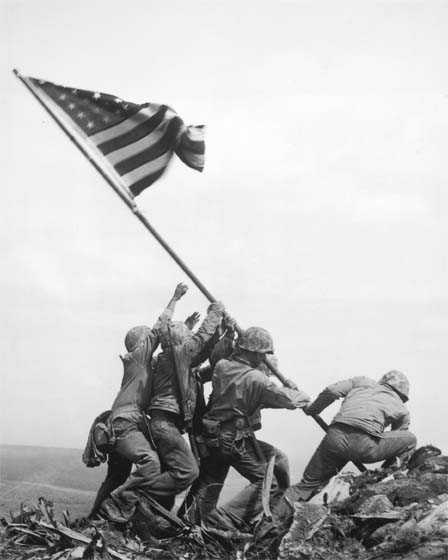MOMENTS OF OUR TIME
April 27, 2011 | Source: Monroe Gallery of Photography
Via wayneford's posterous
Notes and thoughts on the photography that I am looking at...
April 27, 2011
Moments of Our Time: Photographs that Define Modern History
Above Execution in Saigon, 1968. (©AP Eddie Adams/Courtesy of Monroe Gallery).
Over the past 100 years, the photograph has formed an important part of both our social and cultural history, with many images becoming icons of our time and often forming the the impetus to set political social changes in motion. Moments of Our Time at London's Atlas Gallery brings many of these key images together, in what could be considered a sequel to the 2010 exhibition, Faces of Our Time.
Amongst the exhibitions many recognisable photographs, are Robert Capa's (1913-1954) D-Day, Omaha Beach, Normandy, 6th June 1944, an image that places us, the viewer, at the very heart of the action, as the soldiers struggle to reach the beachhead through a raging surf, whilst under the threat of enemy fire, a photograph that clearly reflects Capa's credo, '...if your pictures aren't good enough, you aren't close enough.'
Whilst American Joe Rosenthal (1911-2006), received a Pulitzer Prize for his iconic photograph Raising the Flag on Iwo Jima, taken in 1945, five days after the U.S. Marine corp landed on Iwo Jima. When asked about the photograph later in life, Rosenthal replied, 'I took the picture, the Marines took Iwo Jima.'

Above U.S. Marines of the 28th Regiment, 5th Division, raise the American flag atop Mt. Suribachi, Iwo Jima, on Friday, Feb. 23, 1945. (©Joe Rosenthal/AP Photo/Courtesy of Monroe Gallery).
And several decades later it was a different war that took centre stage. On 2 February 1968, Eddie Adams' (1933-2004) photograph Execution in Saigon, South Vietnam, appeared on the front page of The New York Times (and syndicated around the world), a day after South Vietnam's chief of police, Nguyen Ngoc Loan, executed a suspected Viet Cong collaborator. Just seconds before this man looses his life, we are presented with the fear in his eyes, and with the photographs publication, public opinion turned against the Vietnam War, reflecting the power of the photograph.
The attack on the World Trade Centre in 2001, was captured by Magnum photographer, Thomas Hoepker. His Twin Towers, Brooklyn, NYC, 9/11, 2001, depicts an almost idyllic scene, with a group of young people sitting and chatting in the late afternoon summer sunshine, as smoke billows from the ground zero, raising questions over about onlookers reactions to the scenes unravelling before their very eyes.
Whilst many of the images in this exhibition are by notable photographers, such as Capa, Rosenthal, Adams, and Hoepker, and others including, Ian Berry, Alfred Eisenstaedt, Elliott Erwitt, Stuart Franklin, Leonard Freed, Burt Glinn, Yevgeny Khaldei, Alberto Korda, Josef Koudelka, Don McCullin, Mark Power, Marc Riboud, W. Eugene Smith, Nick Ut, and Abraham Zapruder, works by authors who remain unknown, but whose images are no less poignant are also included.
On the 6 August 1945, an atomic bomb was dropped on the Japanese city of Nagasaki, the second such attack on the country. This now iconic image of the attack, depicting what The Times described as a 'huge mushroom of smoke and dust,' has become one of the most powerful symbols of the anti-war movement. Whilst the ethereal, almost cinematic image of President John F. Kennedy slumped in the back of his presidential car, and cradled in the arms of Jackie Kennedy, which has been utilised in artworks by contemporary artists Andy Warhol and Robert Rauschenberg, is etched on our shared memory of this tragic event.
These photographs, and others in Moments of Our Time, are rarely easy to look at, but are powerful markers of history over the last 100 years, and represent the important place the photograph holds in informing, and setting in motion social and political change.
Moments of Our Time is at the Atlas Gallery, London, until 28 May 2011.
(Monroe Gallery of Photography is pleased to have provided several key photographs to this exhibition.)

